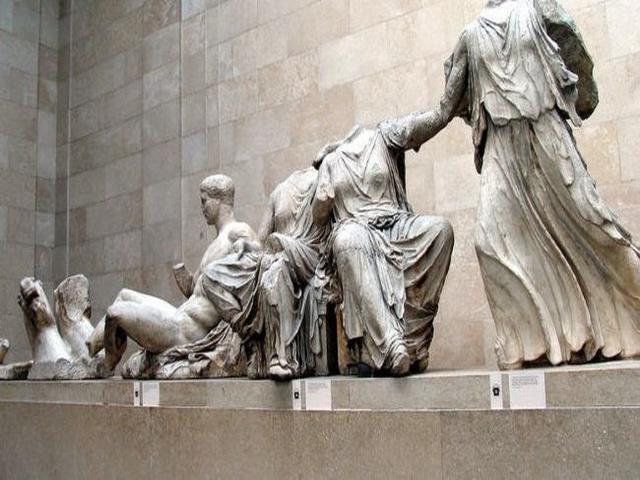Parthenon Sculptures

The Parthenon Sculptures, also known as the Elgin Marbles, are a collection of ancient Greek sculptures that once adorned the Parthenon temple on the Acropolis of Athens. This magnificent temple was built between 447 BC and 432 BC as a dedication to the goddess Athena, the patron deity of Athens. The Parthenon was a symbol of the city's power and wealth during its golden age, showcasing the finest examples of classical Greek art and architecture.
The collection of Parthenon Sculptures housed in the British Museum includes a significant portion of the original decorative elements of the temple. Among the pieces are 75 meters of the original 160-meter frieze, 15 metopes, 17 partial figures from the pediments, and various architectural fragments. These sculptures depict scenes from Greek mythology and religious processions, offering a glimpse into the cultural and artistic achievements of ancient Athens.
The controversial history of the Parthenon Sculptures dates back to the early 19th century when Lord Elgin, a British diplomat, removed the artworks from the Parthenon and transported them to England. The British Museum has since displayed these sculptures, sparking debates about their rightful ownership and the ethics of their removal. Many argue that the Parthenon Sculptures should be returned to Greece and reunited with the remaining pieces in the Acropolis Museum, where they can be appreciated in their original context.
The debate over the Parthenon Sculptures reflects larger discussions about cultural heritage, colonialism, and the responsibilities of museums in preserving and displaying artifacts from other countries. While some believe that the sculptures should remain in the British Museum as part of a global cultural heritage, others advocate for their repatriation to Greece as a matter of respect for the country's history and identity. The ongoing dispute highlights the complexities of cultural ownership and the challenges of balancing preservation with accessibility.
Visitors to the British Museum have the opportunity to admire the beauty and craftsmanship of the Parthenon Sculptures, marveling at the intricate details and storytelling depicted in these ancient artworks. Whether viewed as a testament to the artistic achievements of ancient Greece or as symbols of a contentious history, the Parthenon Sculptures continue to captivate and inspire audiences from around the world.
© ChatGPT 3.5